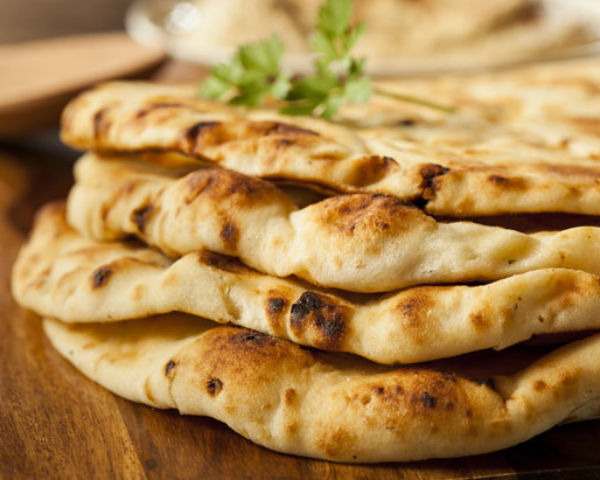Flatbread Around The World: Indian Naan
This Southeast Asian staple is gaining shelf space in North American supermarkets—and what's not to love? Fluffy, leavened naan was first recorded being served to royals at the Imperial Court in Delhi as far back as 1300 A.D. Whether brushed with ghee (clarified butter) or topped with crushed garlic, the old school delight is a naturally sumptuous companion to rich sauces and fiery curries.
The earliest appearance of "naan" in English literature dates back to 1810, where is appeared in the travel writings of William Tooke. The original Persian word nān 'bread' was already a staple in Middle-Persian/Pahlavi as n'n 'bread, food'. The form "naan" now is used across Asia (and the world), having been borrowed in a range of languages spoken in central and south Asia, including present-day India, Pakistan, Bangladesh and the surrounding regions. In these countries and regions, the generic designation "naan" refers to a kind of (in most cases) flatbread, baked according to locally adapted recipes.
Typically, it will be served hot and brushed with ghee or butter. It can be used to scoop other foods, or served stuffed with a filling.Peshawari naan and Kashmiri naan are filled with a mixture of nuts and raisins; in Pakistan, roghani naan is sprinkled with sesame seeds; Kulcha is another type. Amritsari naan also called as amritsari kulcha is stuffed with mashed potatoes, onion (optional) and lots of spices. Possible seasonings in the naan dough include cumin and nigella seeds. The Pakistani dish of balti is usually eaten with a naan, and this has given rise to the huge karack or table naan, easy to share amongst large groups.
Want to know more about how flatbread is made in other countries? Click here to see 11 Incredible Flatbreads From Around the World
